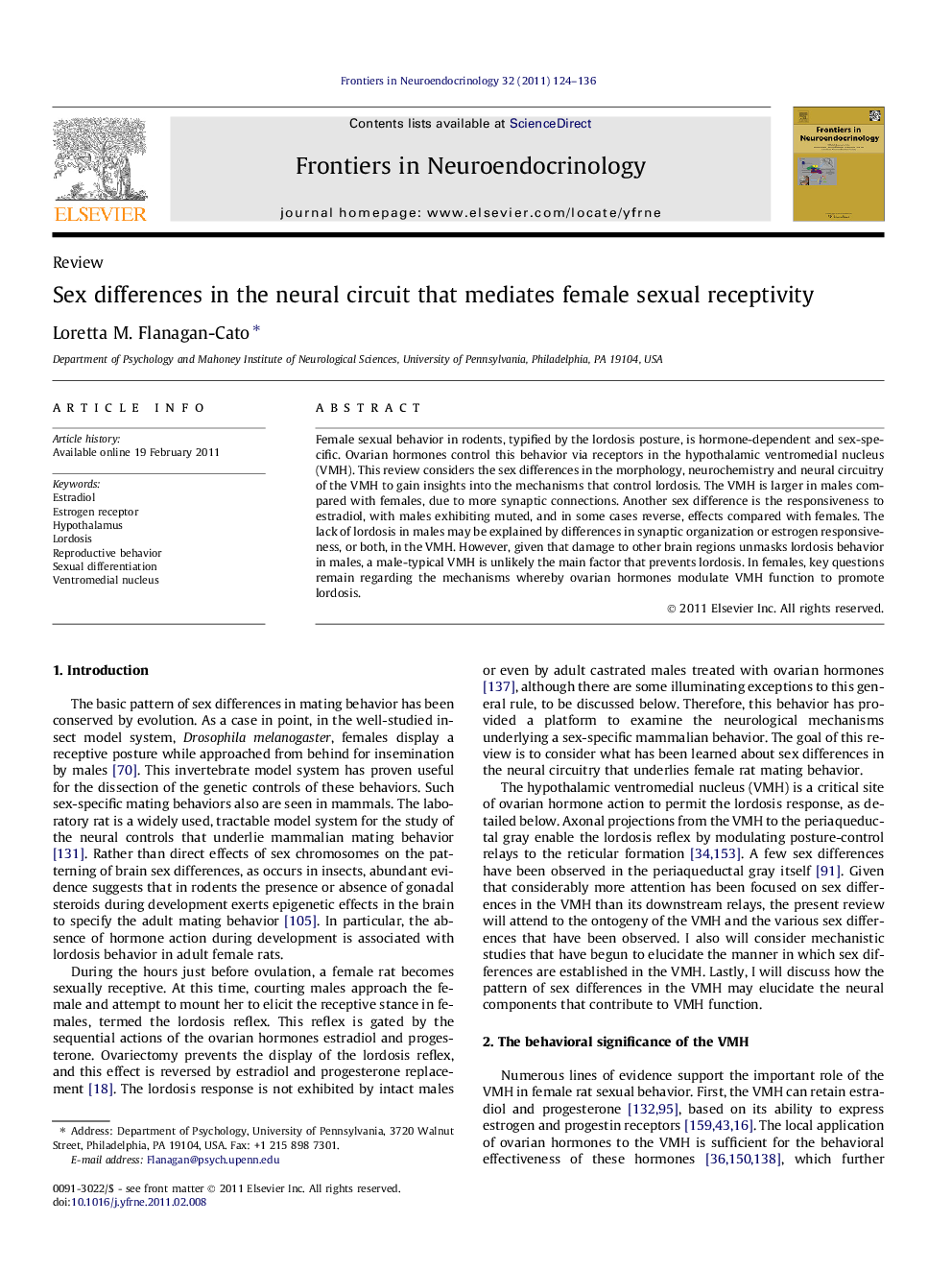| Article ID | Journal | Published Year | Pages | File Type |
|---|---|---|---|---|
| 2799394 | Frontiers in Neuroendocrinology | 2011 | 13 Pages |
Female sexual behavior in rodents, typified by the lordosis posture, is hormone-dependent and sex-specific. Ovarian hormones control this behavior via receptors in the hypothalamic ventromedial nucleus (VMH). This review considers the sex differences in the morphology, neurochemistry and neural circuitry of the VMH to gain insights into the mechanisms that control lordosis. The VMH is larger in males compared with females, due to more synaptic connections. Another sex difference is the responsiveness to estradiol, with males exhibiting muted, and in some cases reverse, effects compared with females. The lack of lordosis in males may be explained by differences in synaptic organization or estrogen responsiveness, or both, in the VMH. However, given that damage to other brain regions unmasks lordosis behavior in males, a male-typical VMH is unlikely the main factor that prevents lordosis. In females, key questions remain regarding the mechanisms whereby ovarian hormones modulate VMH function to promote lordosis.
► This review considers sex differences in the neurochemistry and circuitry of the VMH. ► The VMH is larger in males compared with females, due to more synaptic connections. ► Males exhibit diminished or reverse effects of estradiol compared with females. ► Such differences in connectivity and estrogen action may suppress lordosis in males. ► However, the evidence that masculinization of the VMH prevents lordosis is weak.
